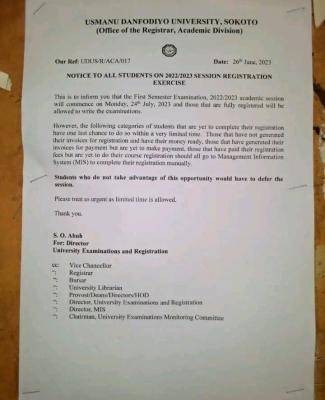
Summary writing skills and techniques are one of the most difficult sections in every examination that requires your summary writing skills. It is the major reason many candidates fail English language in any examination that has summary questions. For this reason, we decided to put up a comprehensive blog post on the definition, type of summary writing skills, strategies and techniques, how to write a good summary and put down answers that would guarantee full marks in summary writing.
This post is loaded with every answer you would be needing when it comes to Summary writing, it would help you position yourself and gain requisite skills and knowledge in the field of Summary writing.

What is a Summary?
Summary can be defined as the writing down of a brief and concise account of a long passage after removing all irrelevant points from the main points and giving a short account of the passage using your own words. In any summary exercise, there is always a piece of written prose which students are expected to read and understand.
Summary writing can also de defined as the process of condensing a longer text or document into a shorter version while retaining its main points and ideas. It involves reading and understanding the original text, identifying the key information and ideas, and expressing them in a clear and concise manner. The purpose of summary writing is to provide an overview of the main content of the text, allowing readers to quickly grasp its main points without having to read the entire document. A well-written summary should accurately reflect the original text’s content and tone while using simpler language and shorter sentences.
The ability of students to comprehend and report accurately the main point in a passage is always tested through the summary questions set on the page.
There are four main things students have to note down when learning how to write a good summary and these are:
1) Brevity: This demands that they must be brief and concise in the answers. there is no room for the use of flowery language or any other additional information aside the name points.
2) Relevance: This calls for your answers to be relevant to the points mentioned in the passage. Students are not expected in summary writing to give any facts of points outside the passage however relevant they think the fact or point is.
3) Proper Coverage of the Passage: This demands that the students must read and understand every aspect of the passage. This calls for proper understanding of the passage since the passage is unlikely to lend itself so easily to them.
4) Clarity: This means that students are expected to put down their answers in clear terms.
In this post, you will benefit the following:
- Definition of Summary Writing
- Types of summary writing
- How to write a good summary
- Reasons for loss of Marks In Summary Writing.
- How To answer correctly and put down summary answers in any question related to summary in any test or examination.
Types of Summary Writing
There are 3 major types of summary writing.
- Extract summary
- Abstract summary
- Précis summary
1. Extract Summary:
An extract summary involves selecting the main ideas or key information from a longer text and presenting them in a condensed form. This type of summary is commonly used in academic writing and research articles. Extract summaries are focused on providing a concise and accurate overview of the most important points of the original text. They are often used in literature reviews or when summarizing research findings. The process of writing an extract summary involves carefully reading the original text, identifying the key points, and selecting the most relevant information to include in the summary. The summary should be written in the writer’s own words and should accurately reflect the original text’s content and meaning.
2. Abstract Summary:
An abstract summary is a type of summary commonly used in scientific writing, such as research papers or academic articles. It is similar to an extract summary but also includes a brief description of the methods used and the results obtained in the original text. The purpose of an abstract summary is to provide a concise and comprehensive overview of the research study, allowing readers to quickly understand the study’s purpose, methods, and findings. The abstract should be written in a clear and concise manner, using plain language that is accessible to a broad audience. It should accurately reflect the content and meaning of the original text, while also highlighting the key points and contributions of the research study. A well-written abstract summary can help readers decide whether to read the full text of the research article and can also be used by researchers to communicate their findings to a wider audience.
3. Précis Summary:
A précis summary is a type of summary that involves condensing a longer text into a shorter form while still retaining the meaning and tone of the original text. This type of summary is commonly used in journalism, public relations, and other fields where it is important to convey information accurately and quickly. The purpose of a précis summary is to provide a brief but comprehensive overview of a longer text, allowing readers to quickly understand the main points and arguments presented in the original document. A well-written précis summary should be clear, concise, and engaging, using simple language and shorter sentences to convey the main ideas effectively. It should accurately reflect the tone and style of the original text while presenting the main points in a more accessible format. Précis summaries are often used in news articles, press releases, and marketing materials, where the goal is to grab the reader’s attention and communicate important information quickly and effectively.
How to Write A Good Summary
It is possible to score all marks in summary in WAEC, NECO and in any other examination and it is also very easy to score zero. Students success in summary depends on how well they follow the procedure given to them on how to write a good summary. A student who fails to take the step by step approach on how to write a good summary may end up flopping the whole exercise.
You are advised to take the following approaches in writing a good summary:
Most student fail summary simply because they failed to read the giving passages carefully to understand it. You cannot write a good summary if you don’t understand the given passage. Most student feel that they can have a look at the questions before reading the passage however this approach is very wrong as it may tempt you to start reading the passage piecemeal within paragraphs, searching for where the answers are and thereby putting it down verbatim or word-for-word.
Writing a good summary demands that you read the passage very carefully so as to have a proper understanding of it before attempting to put down your answers. Having said this, reading and understanding the passage may take you more than one reading.
Step 1: Read The Passage Very Carefully
Firstly, read the passage very quickly to know the subject matter of the passage. Please note that most summary passages and never titled. This is a deliberate act as it is meant to make to make students read through the passages and forestall students’ attempt to guess at answers to the questions.
Step 2: Read The Passage Very Carefully Again
After the first reading, you can read the passage once again to intimate yourself better with the subject matter of the passage. After the second reading you can then proceed to read the questions as this will provide an insight to what you will not focus your attention on when you are reading for the third time.
Step 1: Read The Passage Carefully Again The Third Time
Read the passage again for the third time and you can now underline or note where the required information for answering your questions are. Of course after in the third reading you should be ready to go back to the questions and answer them.
The above steps if taken seriously would help you answer a good summer question weather in any test, WAEC or NECO examination.
Aside knowing how to write a good summary it would be good to know how to put down summary answers in WAEC or NECO or any examination that has questions on testing your summary writing skills.
How to Answer Summary Questions In WAEC, NECO or Any Test
The following the steps required to be taken in putting down summary answers that is you must follow the steps in answering questions related to summary writing.
1) Write in Sentence:
Summary answers should be written in sentences. When the student write a preamble (a kind of introduction to sentences please answers) the preamble must flow into the sentences.
For example, in a question where the student is asked to summarize the factors responsible for different levels of achievement in schools the students will need to write a preamble of all his sentences the preamble will be “the factors responsible for different levels of achievement in schools are”.
This can be followed by his sentences summarizing the factors. E.g the factors responsible for different levels of achievement in schools are:
I) where the schools are located
II) some schools are located in privileged areas all others are not.
The above sentences are complete sentences because they have their distant subjects and verbs and other elements of a sentence.
Another important thing is that you should not write more than the number of sentences you are asked to write. Where you are asked to write two sentences don’t write one sentence or three sentences.
2) Short and Concise Answers:
Summary answers should be short and concise. avoid the inclusion of irrelevant or extraneous material in every scoring answer. Limit your answers only to information available in the passage.
3) Use Your Own Words:
You will be doing yourself a great injustice by copying word for word from the passage. In writing down your answers make use of your own words and expressions as much as possible, you are not expected to engage in mindless lifting of words and expression directly from the passage.
4) Make Use of Good Grammar:
Summary answers should be written down in gold drama and expression make sure that your answers are devoid of grammatical and expression errors, in that way, you would answer your summary questions perfectly.
This piece of article is very essential for individuals or persons required to write a good summary writing in any examination be it WAEC, NECO, Job tests or the likes.
7 Reasons For Loss of Marks in Summary Writing
Candidates of students lose marks heavily in summary writing because they failed to adhere strictly to the principles and procedures guiding the practice of summary. A careless student will lose marks because various penalties are imposed on every careless presentation of summary answers.
The causes of loss of Marks in summary writing are:
1) Mindless lifting of Fords From The Passage:
This is a grievous offence in summary. Mindless lifting of a passage means copying down answers when using the exact words and expressions of the writer of the passage. Firstly it shows poor understanding of the passage and secondly it means that the student cannot put down another person’s thoughts points and ideas in his own expression, indiscriminate lifting does not merit marks in submit test it’s only zero.
2) Absence of Conciseness and Relevance:
This is another reason for loss of marks in summary writing. Conciseness and relevance rigidly demanded in summary. inclusion of irrelevant or extraneous and unnecessary material in every scoring answer will attract the penalty of deduction of one mark.
3) Phrases and Incomplete Sentences:
In summary you are expected to write your answers in complete sentences with subjects verbs and probably other elements of a sentence present in them. When is students write phrases where complete sentences are demanded the examiner will award two-and-a-half marks instead of a mark of 5 for each of the scoring answers by so doing the candidate or student loses marks.
4) Wrong Preamble/Introduction:
In summary answer where the student writes a wrong preamble which does not flow with his sentence he or she can score only two-and-a-half marks instead of the complete 5 marks. Where the preamble taken with the rest of each answer makes a sentence the student who scored the full Mark of 5.
5) Writing Two Scoring Points in One Sentence:
Where is students right to scoring points in one sentence she will get marks for the first one but the other point will be regarded as irrelevant by the examiner.
6) Writing More Than Required Number of Sentences:
Where a candidate write more than the required number of sentences, the required number of sentences be marked and the examiner will ignore others. The danger of this is that the scoring answers may be in those sentences the student to writes in excess.
7) Grammatical and Expressions Errors:
Another reason student lose marks in summary writing is that’s with everyday medical error and expression errors the student loses half Mark.
You should be aware that imposition of one penalty for error does not preclude the imposition of another penalty for any other error committed even in one scoring answer. In other words, the imposition for inclusion of irrelevant or extraneous material in one-scoring answer will not around pity in your examiner not to impose penalty for another error you committed in the same scoring answer. Therefore you have to make sure that you practice summary regularly so as to acquire the necessary skills and techniques of summary writing.
Hope this is well understood? do you have any questions as regards Summary writing and all that you need to know with regards to how to write a good summary, summary skills, techniques and strategies in avoiding loss of marks in summary writing? please fee free to reach out to us via the comment section below and we shall respond accordingly.
Kindly share this post via by hitting the social media buttons below so others could benefit from it. Thank you as you do so.




